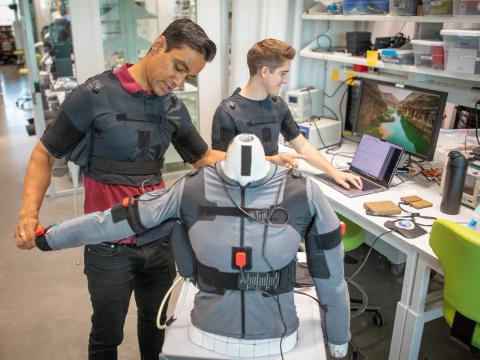Information Domain Competition Happens Locally
Competition in the information domain does not happen nationally. It happens locally, said Ben Leo, CEO and co-founder of Fraym, an international open-source intelligence and data analytics company.
“Competition in the information domain simply doesn’t happen at the national level. It happens in communities, neighborhoods, and even down to individual households or homes,” Leo said during a SIGNAL Executive Video Series discussion with Robert K. Ackerman, SIGNAL Magazine’s editor in chief.
Fraym uses artificial intelligence, machine learning, data analytics and other tools to observe local events or trends that impact global affairs. “If we think about the U.S. and government and private partners, we’re really darn good at observing things—physical objects—from space using satellite imagery,” Leo noted. “We’re talking about ships or aircraft or trucks or tanks or stuff like that, but to address each of these global challenges in a rapidly evolving world, we’re going to really need to have a deep sense of what people look like, what they think, and how they behave at more localized levels to be able to come up with these solution sets.”
He stressed, however, that the company works within the “privacy ecosystem or construct that is increasingly paramount.”
Although hyper-localized, the data covers a wide range of topic areas. “Everything is spatial, and everything is local, and our data categories, powered by these technological innovations, are available down to a one-square-kilometer grid level and across the breadth of different characteristics, whether we’re talking about demographics like language, ethnicity, religion, or access to services or health or education or attitudes, or behaviors,” he explained.
Global events or trends, such as pandemics, international power competition, economic insecurity or inequalities, and climate impacts, accelerate the need for geospatial analytics and hyper-localized data. “What we have done, amongst many other things, is built out a capability to produce localized data on what people think about global issues or global players or socioeconomic circumstances or other mission critical topics—and again, down to that hyper-localized level, that one square kilometer grid level,” Leo stated.
The analysis also can be “aggregated up to official administrative regions, cities or towns” and can be customized to explore people’s thoughts about a particular issue “around a road corridor.” Furthermore, “We’re able to refresh this data on a regular basis so we’re able to look at time trend analysis,” he added.
The analysis can be used to sound alarms when necessary. “We’re able to build alerts off of that to be able to identify where viewpoints are changing on mission-critical topics, whether it’s important to the government or our partners or just global issues that we care deeply about, as well as start to pull the thread on why those viewpoints might be changing,” Leo reported.





Comments